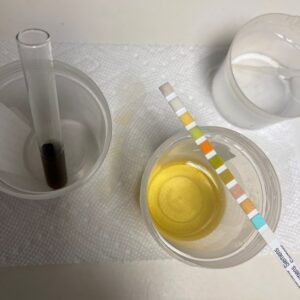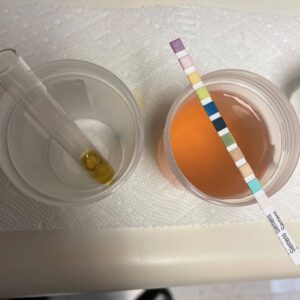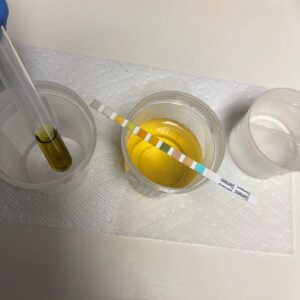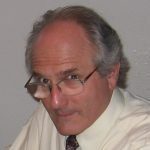JARED L. ZEFF, ND, VNMI, LAC
The following is not an article prepared for a medical journal. Not every statement of fact is cited or referenced. This is a commentary on the medicine, a running set of observations about practice in the field. It’s not meant to be a peer-reviewed presentation; rather, these are notes and thoughts from a practicing naturopathic physician, a primary care doc in general practice.
Finding the Cause
I was recently asked to give a talk at one of our educational conferences. I like conferences – “real,” in-person conferences. Although it is not totally fair to say that virtual conferences, those attended through one’s computer, are not real; of course they are. And they can be a great way to convey information. But I became a physician before the dissemination of personal computers and the internet. I attended several in-person conferences annually until last year, when SARS-CoV-2 emerged, and we were all told to social distance and not gather. Though webinars and virtual symposiums had been occurring already, this suddenly became the temporary norm. But conferences are more than the streaming of linear information. I get easily as much benefit from meeting one-on-one with my colleagues, over meals or perhaps a cigar and a scotch in the evening, as I do from the educational talks. There are also new products on display to discuss with their vendors. And some of the talks are experiential as much as they are verbal. So, when I was asked to speak at a “real” conference, I was eager to do it. I was given the topic: “Finding the cause.” The following is the first of a 2-part synopsis of my journey in understanding and applying this topic to the practice of naturopathic medicine today.
Starting at the Roots
When we developed the definition of naturopathic medicine through the AANP in 1986-1989, we concluded that we were best defined not by our association with specific modalities, but rather by concisely articulating our medical philosophy. In part, this was because modalities are often determined by philosophy, and not vice versa. In that endeavor, we determined six distinct points that characterize naturopathic philosophy. The second point is to, “Identify and treat the cause,” which was later Latinized as, “Tolle causam.”
Conventional medicine is based upon a philosophy too, though that fact is rarely considered, which may best be expressed by the phrase, “Diagnose and treat disease.” In fact, the legal definition of “medicine” in our society shares roughly the same wording. This philosophy contains at least 4 assumptions. 1) There are diseases or pathological entities that are responsible for human illness and suffering. 2) These diseases or entities can be identified. 3) These diseases or entities can be treated or eliminated. 4) The best methods of treatment are the evidence-based applications of pharmaceuticals and surgery, with a few additions. Many naturopathic doctors may assume that these assumptions characterize much of naturopathic medicine as well. Perhaps they would substitute “natural products” or supplements for the pharmaceuticals, at least part of the time. Or, perhaps they would simply add these interventions to the list of evidence-based therapeutics. This is certainly a viable opinion, but one I disagree with.
Being one of the primary authors of the 6-point AANP definition, or as Dr Pamela Snider would probably prefer to say, one of the midwives of that process, I am rather partial to it. It is not perfect, but it goes a long way toward establishing the necessity of our profession as a separate and distinct branch of the healing arts. Naturopathic medicine, though it may share the aim to “diagnose and treat disease,” has a different philosophy and therefore a different set of assumptions. Having studied the body, we understand that there are different pathologies, approximately 14,000 or so, and that these are definitive. But, we can understand “cause” differently.
Lindlahr, who wrote one of the most important descriptions of naturopathic medicine more than 100 years ago, discussed “cause” in terms of the “unity of disease” (meaning there are unifying causes among differing disease states). His book Nature Cure, published in 1913, described three primary causes of disease. In Chapter 4 of Nature Cure, Lindlahr lists them as:
- Lowered vitality.
- Abnormal composition of blood and lymph.
- Accumulation of waste matter, morbid matter, and poisons.
Paying Close Attention
I began to practice in 1979, and after 2 years, I became frustrated and discouraged. I loved delivering babies. I loved applying my growing diagnostic skills, ordering laboratory and imaging studies, and determining the pathology of my patients. I loved the idea of the medicine and the materials, the botanicals and homeopathics, the manipulations, etc, that I had been taught. I loved functioning as a physician, but I did not know how to help really sick people. I wondered if I even could.
Then I found a mentor, an older doctor, and I began working with him. What I observed was that he was treating every patient almost identically, regardless of their pathology. He determined a unique diet for them, began them on a series of hydrotherapy treatments, gave them botanical medicines, homeopathics, or a specific nutrient product, and they began to improve. Even the really sick ones, those with crippling arthritis or other autoimmune diseases, started getting better. As I observed this, I gradually came to understand what was going on.
Though I had never been told to read Lindlahr (Nature Cure was not assigned reading during my educational process), and I did not have the words at the time, what my mentor was doing was identifying and eliminating the causes of disease, and then stimulating the self-healing mechanisms of the body. One woman, who had come in on a wheelchair because of her arthritis, was on a cane 6 weeks later, and then did not need the cane 6 weeks after that. I saw patient after patient healing based on the philosophy of Lindlahr, the philosophy of naturopathic medicine, and the profound power of the Vis.
One additional observation to consider is that during this time, whichever of the various therapeutics were chosen, they did not work as well when applied without a focus on the patient’s diet/digestive function. A major aspect of cause is “toxemia.”
Evaluating the Terrain
I had heard about toxemia. I had even read a little book called Toxemia Explained: The True Interpretation of the Cause of Disease, by J. H. Tilden, MD, 1926. Charley Cropley, my classmate, had recommended it to me. But the concept was not emphasized in my education, and certainly not in my clinical rotations. So, I had filed it away as an interesting old notion that used to have some significance. Little did I know.
“Toxemia,” as Tilden explained, is the product of poor digestion. It is based in part on poor food choices or the ingestion of toxic substances, and in part on the relative weakness of the digestive system. Toxins are generated in the intestines by the bacterial degradation of undigested food. These toxins can then enter the blood stream and become chronic sources of irritation and inflammation. Inflammation, as we know, underlies much of chronic disease, including coronary artery disease, cancer, and all manner of chronic autoimmune diseases. According to Tilden, any pathological process that includes inflammation is in part, if not primarily, driven by toxemia.
I had previously wondered about this theory, and how much of it was credible. While teaching at NCNM (now NUNM) in the early 1980’s, one of my courses was Gastroenterology. Though I was teaching a comprehensive course, covering the conventional knowledge of the time, my foundational focus was on naturopathic clinical theory. While researching information for my course, I came across the book Human Intestinal Flora, by Drasar and Hill, 1974. The text explained how intestinal flora contributed to disease by converting dietary elements into toxic metabolites, which were then absorbed into the blood, and carried throughout the body. The authors further illustrated the specific biochemistry whereby various bacteria could transform nutrient elements, amino acids, fatty acids, cholesterol residues, and other compounds into toxins. It was all right there, the microbiological and biochemical basis of toxemia!
Unifying Principles
Just as Lindlahr discussed the concept of “unity of disease,” elaborating on the potential for shared cause among various pathologies, he also advocated for the idea of “unity of cure.” Though there are disease states and pathologic entities by which conditions can be explored, categorized, explained, and treated; there is also another way to look at it. Disease is a process driven by specific determinants, such as genetics, toxemia, environment, or other lifestyle factors. One could treat a disease to suppress the expression of it. Or, one could seek the disturbances that resulted in the disease expression, attempt to modify or remove these, and effectively remove the basis for the pathology. For example, if the driver of a toxic, inflammatory process were removed, the subsequent process could reverse and possibly resolve. In the process of finding the cause, the concept of “unity of cure” is what allows for potential treatment options that would be unavailable with a narrower view of pathology.
Measuring Progress
One of the tools I use to assess for the presence of toxemia is urinary indican evaluation, also called the Obermeyer test. You can find it described in old laboratory textbooks. If tryptophan has not been properly digested in the small intestine, it will be converted to indican in the large intestine. Indican is a toxin, and it is easily identified in the urine as indican sulfate, which is converted by the Obermeyer reagent into indigo, the blue dye. One simply takes an aliquot of urine, adds an equal amount of the reagent, and the reaction takes place. I eyeball the result and grade it as 1+, 2+, 3+, or 4+. For my purposes, this is a qualitative test. To really interpret it well, one must take the specific gravity into account and adjust the grading accordingly (the more dilute the urine, the more dilute the indigo, and therefore the lighter the color of the urine post-reaction).



Urinary indican evaluation is a simple way to qualitatively demonstrate the degree of toxemia in a particular body. I primarily use this test to illustrate the concept of poor digestive function and the potential degree of toxic accumulation occurring in my patients. After a month or two of treatment, I repeat the process. If they have been doing what I ask, they should feel the difference. With the Obermeyer test, they can see the difference. Toxemia is real.
In part 2, I will include additional clinical applications of what “finding the cause” means to me.
Respectfully,
Jared L. Zeff, ND, VNMI, Lac

Jared L. Zeff, ND, VNMI, LAc is a licensed doctor of naturopathic medicine and a licensed acupuncturist. In addition to functioning as Medical Director at the Salmon Creek Naturopathic Clinic in Vancouver, WA, Dr Zeff taught on the faculty at National University of Natural Medicine in Portland, OR, where he was also Dean from 1988 to 1993, and holds a professorship in Naturopathic Medicine. Dr Zeff is a graduate of the University of California, NCNM, and the Emperor’s College of Traditional Oriental Medicine. He, along with Pamela Snider, is the author of the AANP’s Definition of Naturopathic Medicine, and the Therapeutic Order concept.
